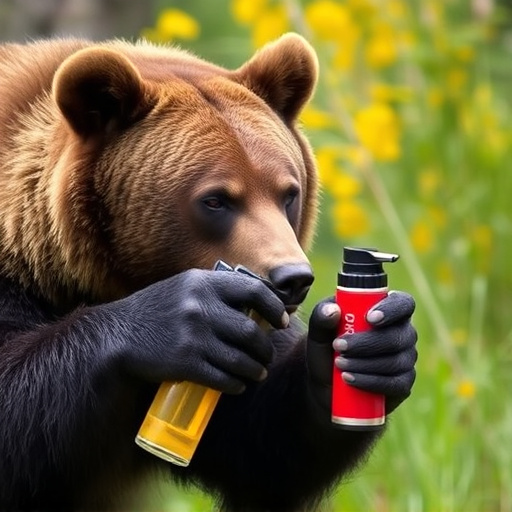Bear pepper spray, though a valuable defense against aggressive bears, faces challenges in effectiveness due to environmental and behavioral factors. The Transportation Security Administration (TSA) allows its carry-on under specific conditions, with containers limited to 3.4 ounces (100 ml), but travelers must adhere to airline policies and comply with TSA restrictions on liquids. Proper deployment involves aiming at the bear's face for 2-3 seconds and retreating, ensuring compliance with TSA and airline guidelines for self-defense in bear country.
“Uncovering the power of bear pepper spray: a vital tool in protecting yourself during encounters with aggressive bears. This comprehensive guide explores the effectiveness of bear spray, its mechanisms, and how it can be used against charging bears. We delve into the TSA regulations surrounding bear pepper spray travel restrictions, ensuring you’re informed before your next outdoor adventure. Learn about its limitations, gain practical tips for usage, and discover why this product is a game-changer in bear country.”
- Understanding Bear Spray: How It Works and Its Limitations
- TSA Regulations on Bear Pepper Spray: What You Need to Know
- Effective Use of Bear Spray Against Charging Bears: Tips and Best Practices
Understanding Bear Spray: How It Works and Its Limitations
Bear spray, also known as bear pepper spray, is a popular self-defense tool for hikers and outdoor enthusiasts navigating bear country. It’s designed to deter aggressive bears when sprayed directly in their faces, causing temporary blindness, coughing, and discomfort. The active ingredient, capsaicin, is derived from chili peppers and stimulates pain receptors much like the heat from spices does. This reaction gives people a chance to escape or defend themselves against an imminent bear attack.
While effective as a deterrent and emergency measure, bear spray has its limitations. Wind and weather conditions can significantly reduce its range and accuracy. Factors such as distance, visibility, and the bear’s behavior can make it challenging for users to deploy the spray effectively. Additionally, some studies suggest that aggressive black bears may develop a tolerance to capsaicin over time, decreasing the spray’s effectiveness. Furthermore, there are TSA restrictions on carrying bear pepper spray due to its potential as a weapon, which limits travel options for those in areas with high bear activity.
TSA Regulations on Bear Pepper Spray: What You Need to Know
The Transportation Security Administration (TSA) has specific regulations regarding bear pepper spray, recognizing its potential as a defensive tool in bear country. These rules are designed to balance the need for self-defense against bears with security measures to ensure the safety of airline passengers and crew. Bear pepper spray is generally allowed on flights if it complies with TSA standards for liquid and aerosol containers. Typically, this means that the spray must be in a container no larger than 3.4 ounces (100 ml) and placed in checked baggage.
When traveling with bear pepper spray, it’s crucial to familiarize yourself with the TSA guidelines. Bear pepper spray cans should be clearly labeled and easily accessible for inspection if requested by TSA officers. It’s also important to check with your airline for any additional restrictions or requirements, as some may have their own policies regarding offensive weapons or self-defense items. Staying informed ensures that you can protect yourself in bear country while adhering to the necessary travel regulations.
Effective Use of Bear Spray Against Charging Bears: Tips and Best Practices
When faced with an aggressive charging bear, properly using bear pepper spray can be a life-saving measure. It’s crucial to remember that bear spray is designed to incapacitate temporarily and create an escape route, not to kill. To ensure effectiveness, it’s essential to follow best practices: aim for the bear’s face, use a quick burst of 2-3 seconds, and back away slowly while the spray takes effect.
Keep in mind the TSA restrictions on bear pepper spray; liquids over 3.4 ounces are prohibited in checked baggage and must be packed in carry-on luggage. Always check current regulations as they can change. Proper usage combined with awareness of these restrictions ensures you’re prepared for potential encounters while adhering to travel guidelines.
While bear pepper spray can be an effective deterrent against charging bears, it’s crucial to understand its limitations and follow best practices for usage. Knowing the TSA regulations on bear pepper spray is essential for travelers in bear country. Remember that proper application techniques are key to ensuring its effectiveness during encounters, ultimately enhancing your safety in these environments.
